Cocadas are a type of cookie or coconut maroon, made with grated fresh coconut, egg whites, condensed milk, sugar and vanilla. Coconut maroons are naturally gluten-free. And they are so easy to make that they have been adopted by many Latin American countries under different names.
Most Caribbean countries refer to them as “coquitos”. However, there are some variations in ingredients and techniques between the recipes of one country and another.
There is no right way or wrong way to eat this traditional coconut dessert. You can enjoy them plain or add toppings such as cinnamon, powdered sugar, chopped nuts, dulce de leche, or manjar blanco.
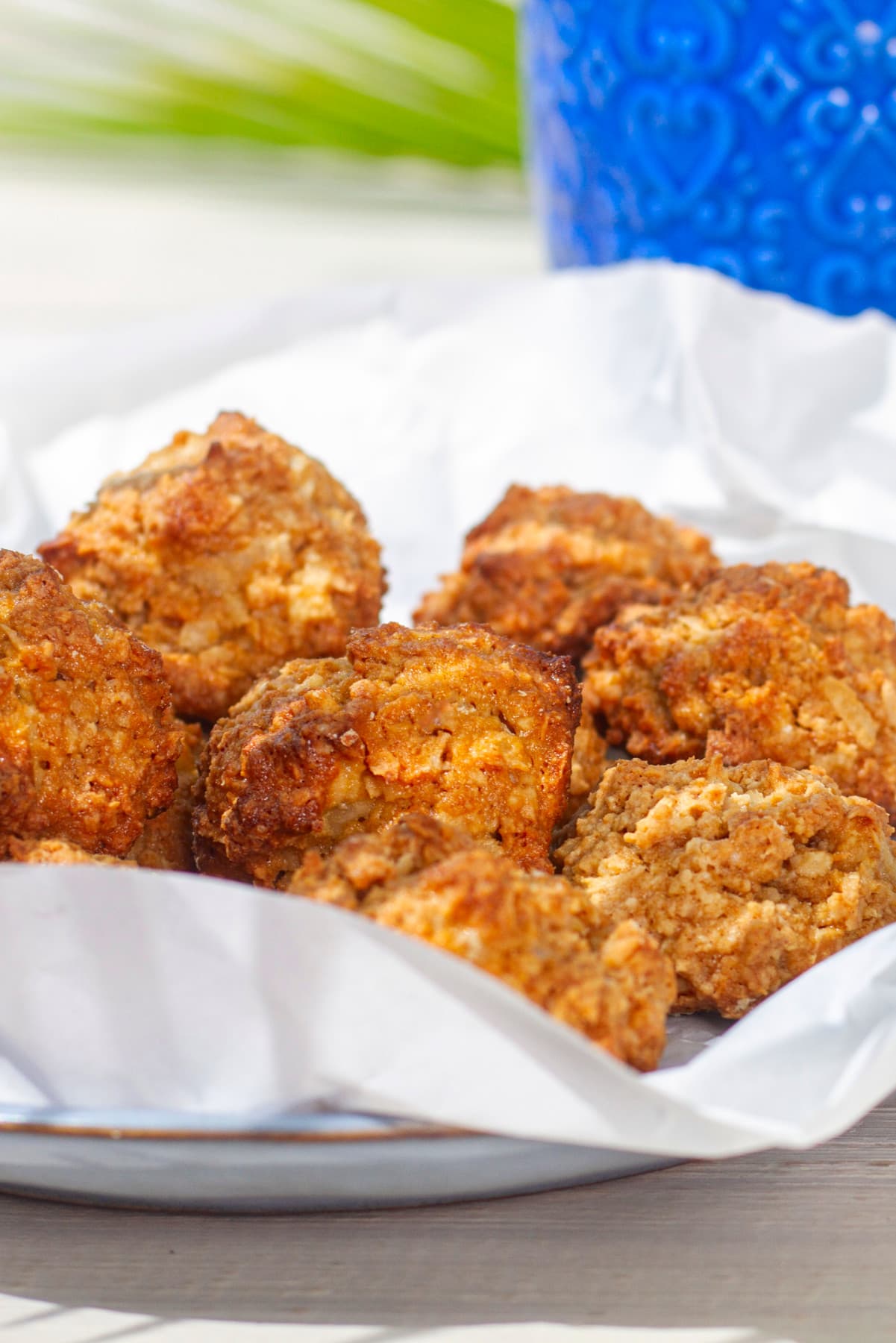
The best thing about the Peruvian cocada is how simple it is to prepare. There are only a few ingredients required: eggs, condensed milk, brown sugar, flour, baking powder, salt, butter, and shredded coconut. The rest is up to your imagination. I like making mine crunchier by adding more coconut flakes while others prefer theirs softer.
A delicious coconut sweet treat that can be nibbled with coffee (preferably Peruvian) or even served after dinner as dessert.
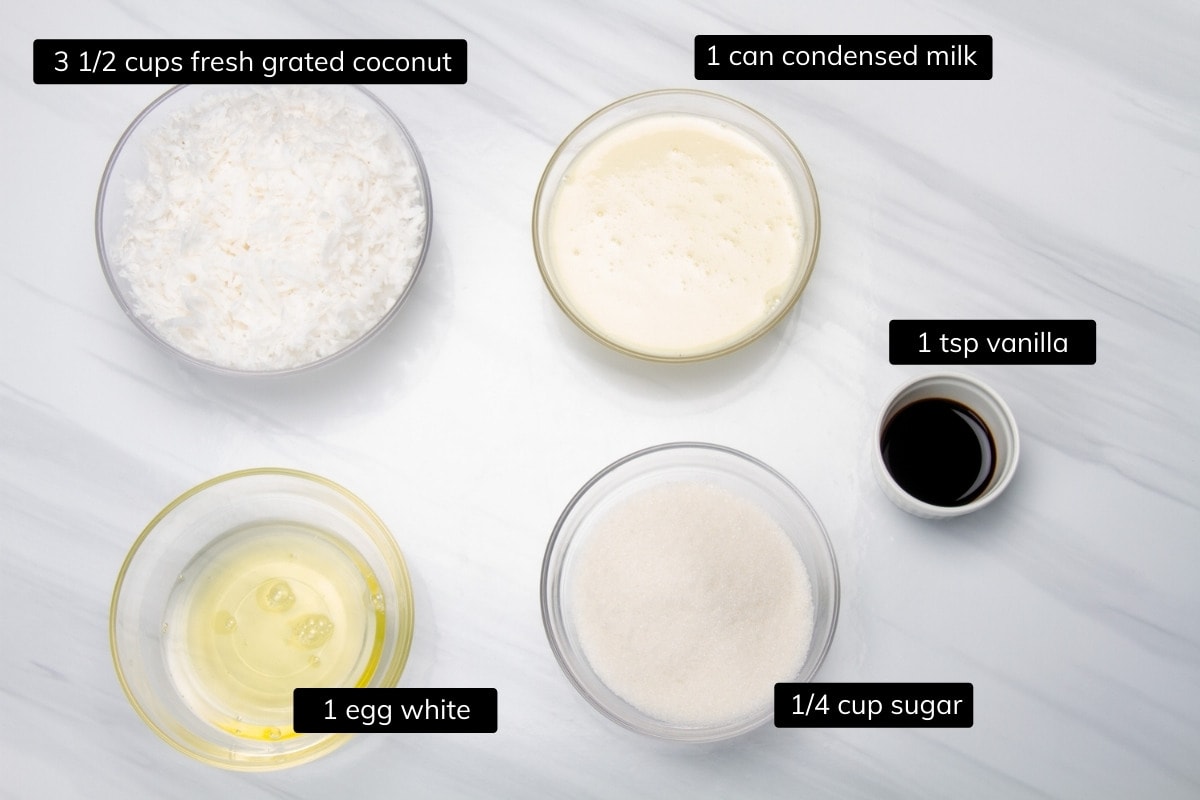
What coconut should be used for cocadas?
According to Peruvian tradition, this recipe is prepared with fresh grated coconut. Therefore, it is best to buy fresh coconuts, remove the hard crust, then peel the brown skin, and finally grate them through the coarse part of a cheese grater.
This option isn’t available to everyone so when you can’t find fresh coconuts, use a mixture of grated dry coconut and coconut flour.
Steps by step photos
Step 1: Preheat your oven to 100 °C (200 °F). Cover a baking sheet with wax paper. If you don’t have wax paper or parchment paper, spread a little butter on the tray, and sprinkle with wheat flour.
Step 2: In a large bowl, mix the grated coconut with the condensed milk and the vanilla essence. Then, beat the egg white until stiff. It is important that the white is at room temperature when you begin.
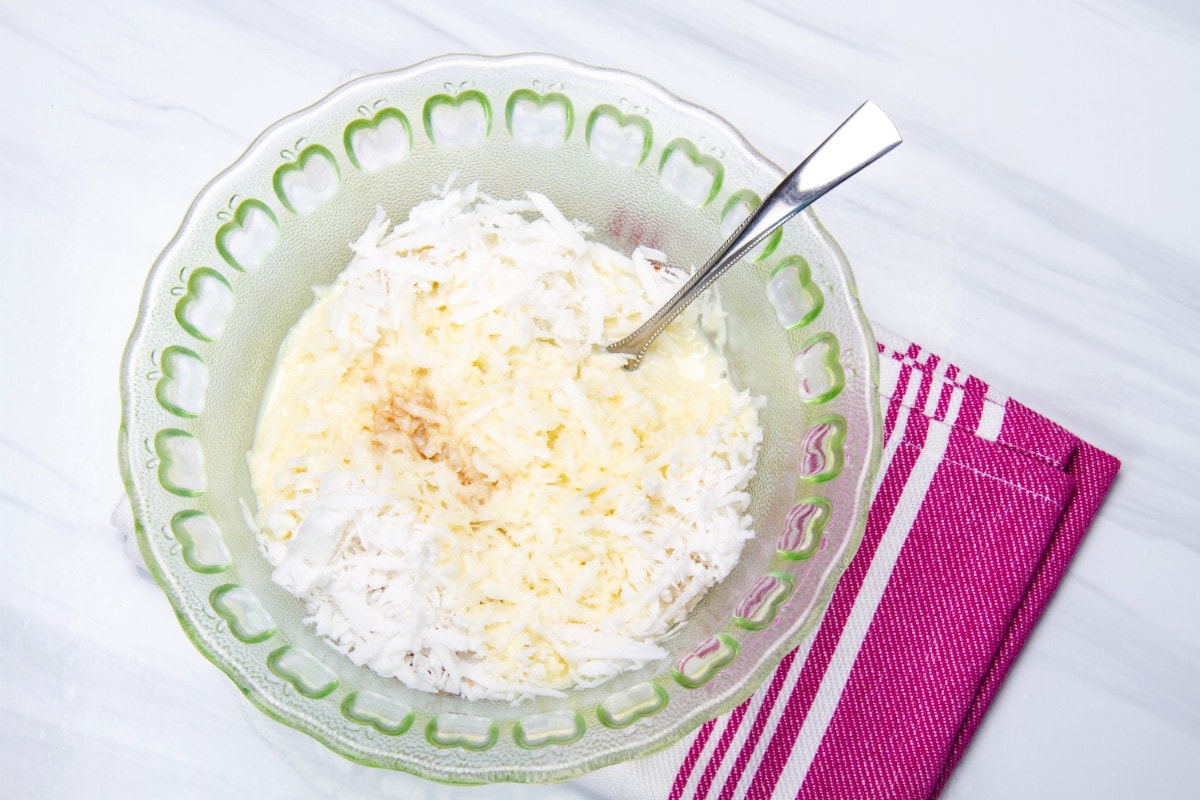
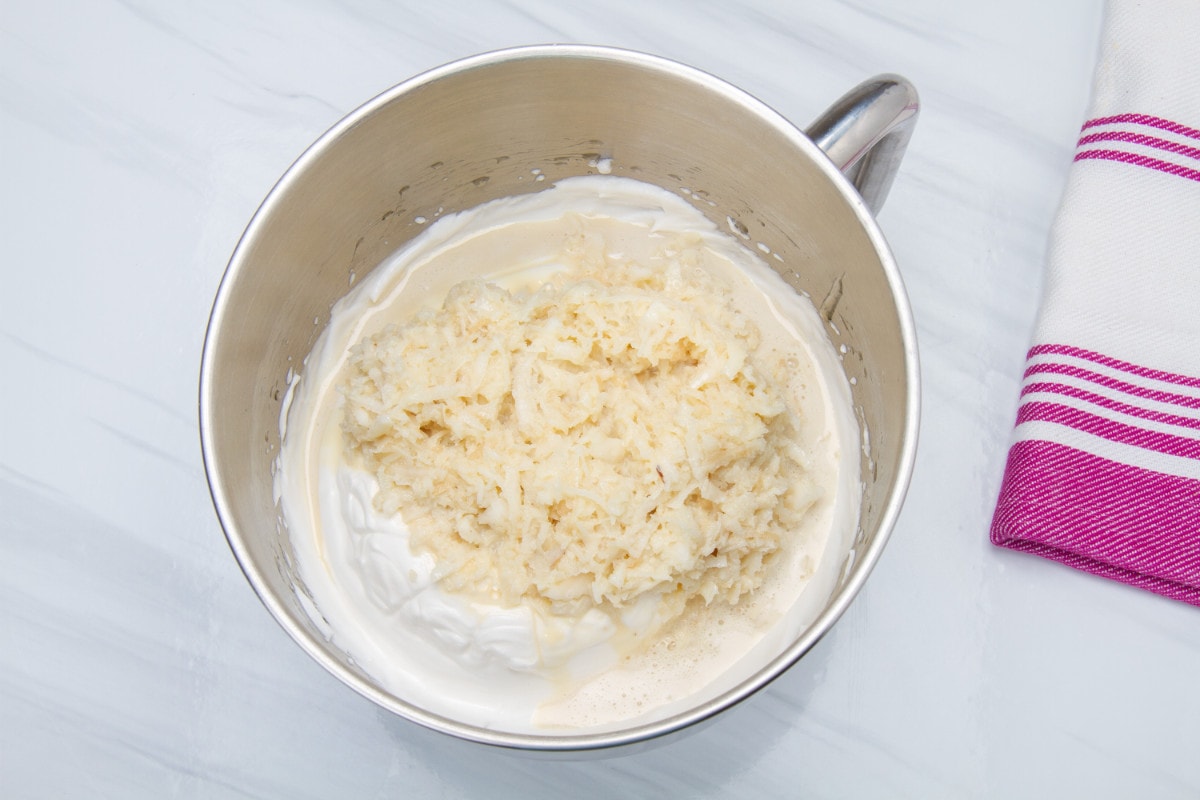
Step 3: With your electric mixer, beat the egg white until it is stiff. When the whipped egg white forms peaks, it is time to add the sugar, and beat for a couple more minutes until the sugar dissolves. Finally, you have to integrate the two mixtures, and with an ice cream spoon, put the cocada balls on the tray and in the oven.
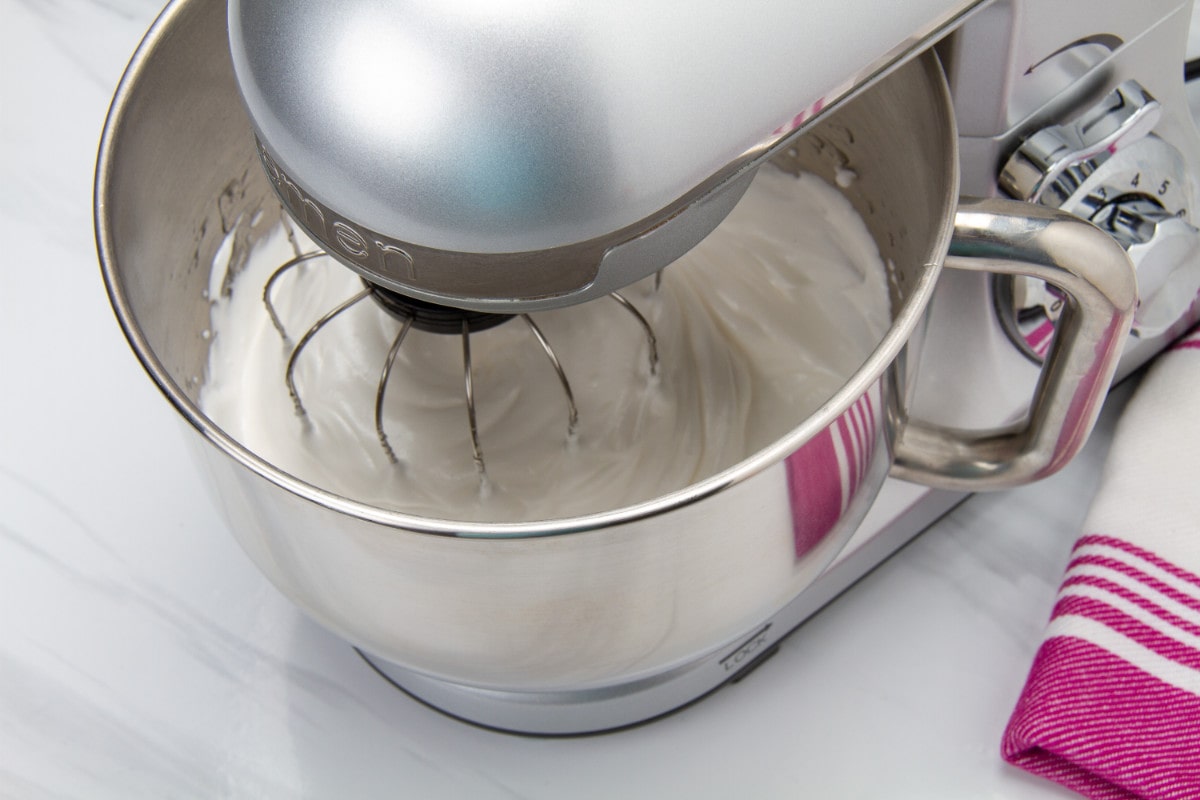
Step 4: Carefully fold the condensed milk and coconut mixture into the beaten egg white. Blend for a few minutes to create a light and fluffy mixture.
Step 5: Scoop the batter onto the prepared baking sheet using a single scoop. Keep in mind that cocadas will have an irregular shape and may flatten slightly during baking.
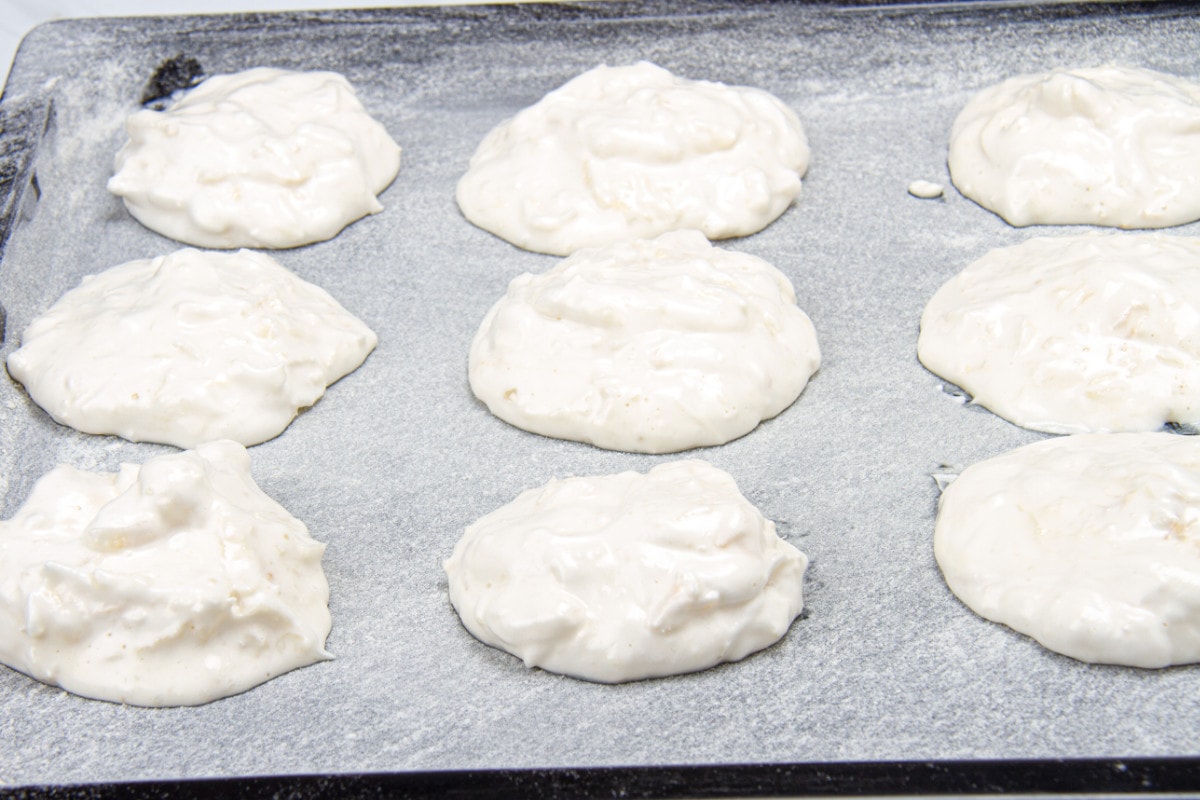
Step 6: bake the cocadas on low heat for 1 hour, or until they reach a golden brown color. Turn off the oven and leave them to cool and set inside for an extra hour.
Step 7: Remove from the oven, and carefully lift the cocadas off the wax paper. Store them at room temperature in a clean, dry place. Enjoy!
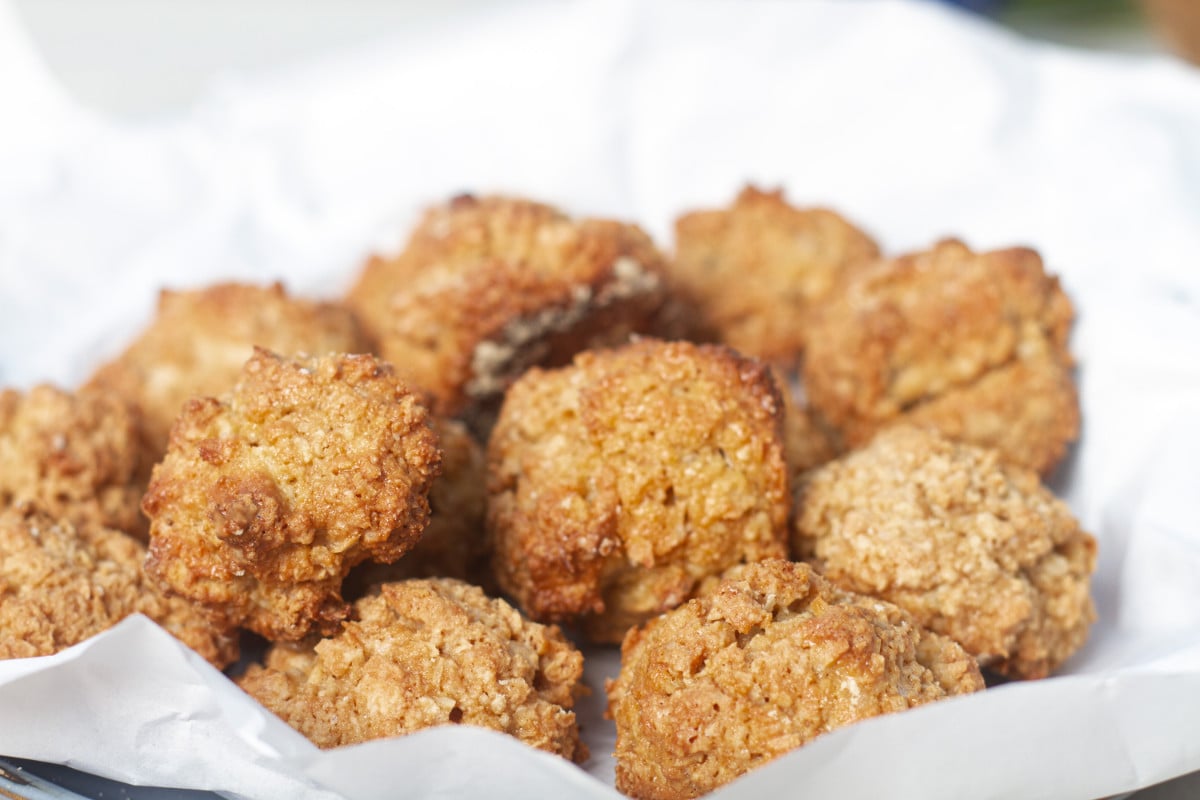
How long can cocadas be kept?
Cocadas are very similar to “suspiros” and the good news is that, in a clean, dry space, they can be kept for up to two weeks. The important thing is that when you store them, they are well cooked, and at room temperature.
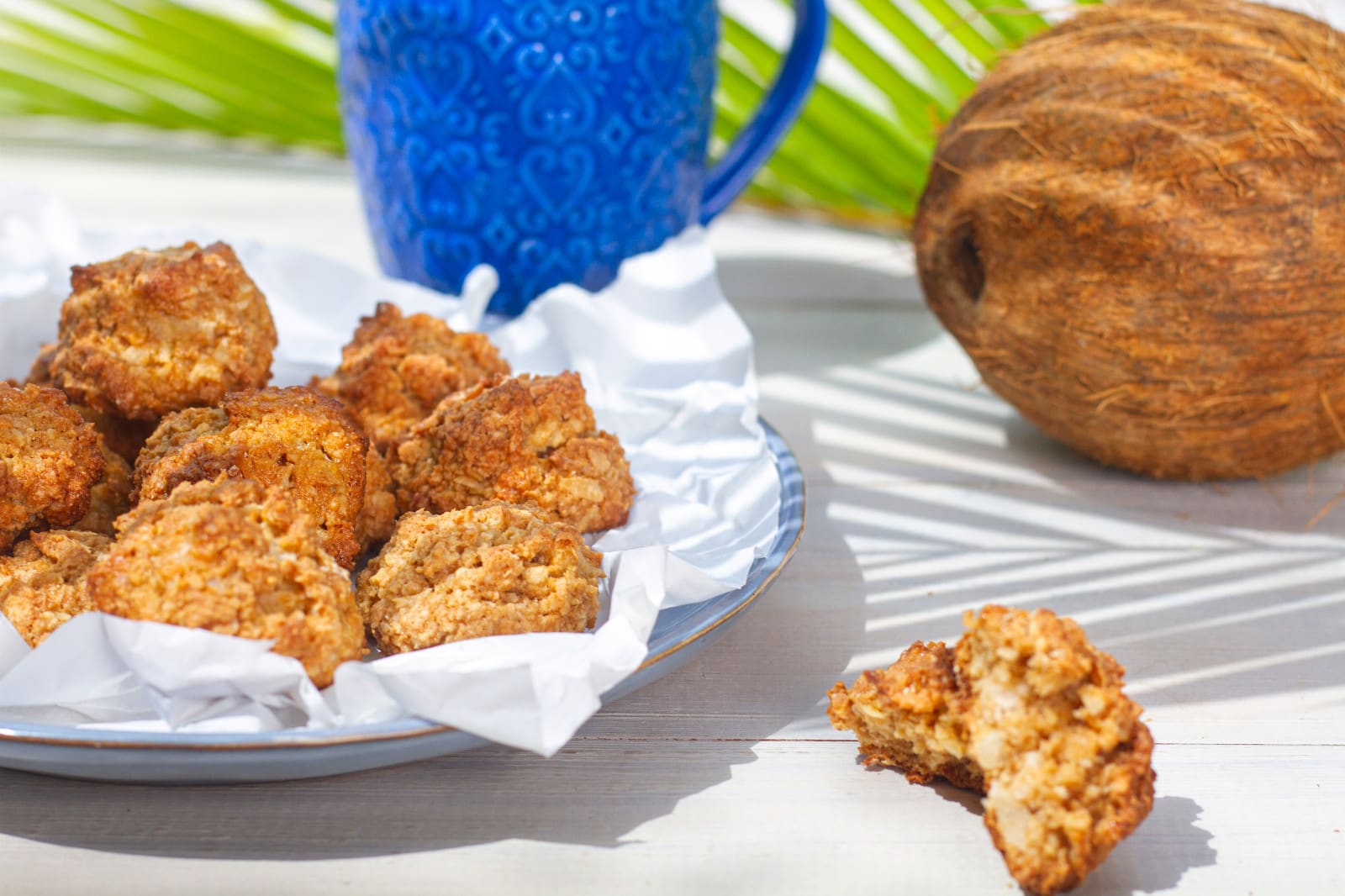
Peruvian Cocadas
Ingredients
- 3 ½ cups fresh grated coconut approx 250 g
- 1 egg white at room temperature
- 1 can of condensed milk 360 ml
- ¼ cup sugar 45 g.
- 1 tsp vanilla essence
Instructions
- Preheat the oven to 100 ° C / 200 ° F. Prepare a baking sheet, covering it with wax paper.
- In a mixing bowl, place the grated coconut, condensed milk and vanilla essence. Stir well with a fork, until the coconut is completely moistened with the condensed milk. Reserve.
- Then, in an electric mixer, beat the egg white until stiff. When peaks form, add the sugar, and continue beating until the sugar is completely dissolved.
- Remove the mixer, and into the same bowl where the white is on the verge of snow, add the coconut mixture with condensed milk. Stir for a couple of minutes until you get a smooth, frothy mixture.
- Using a 1-scoop, place batter balls on the baking sheet. Cocadas are usually a little misshapen, and they flatten a bit during cooking, so don’t worry.
- Bake on low heat for an hour. When your cocadas are well browned, turn off the oven, and leave them there to rest for an hour until they cool.
- Remove the tray from the oven, and carefully remove them. Store them in a clean, dry place at room temperature.
Nutrition

Peruvian foodie. I’ve been writing about the food of Peru for over 10 years. Read more about the Eat Peru team here

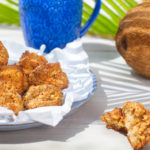
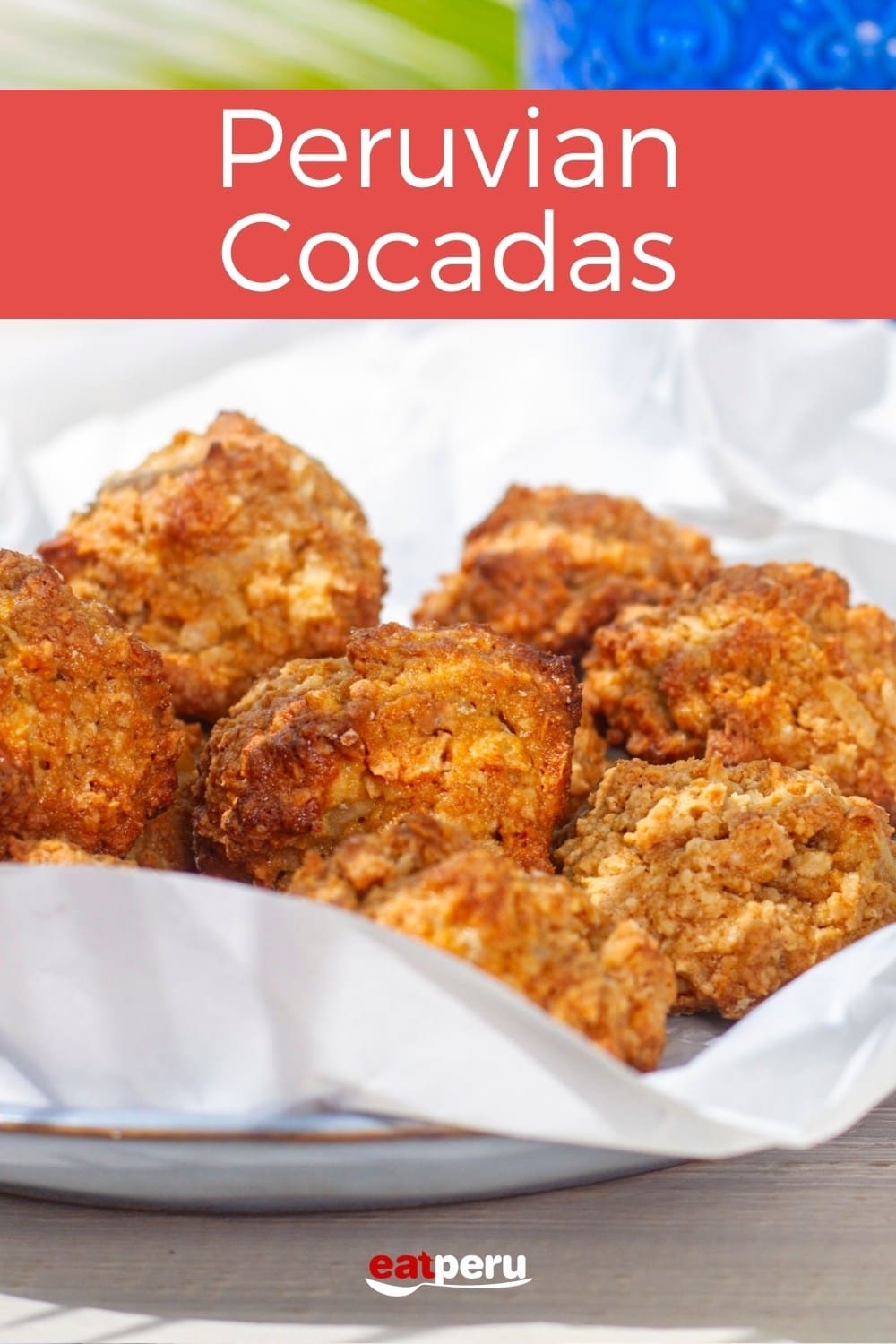
Blythe
As I couldn’t find fresh coconut, this recipe was made with the recommended dried coconut and half coconut flour. The recipe was extremely dry, even when adding the egg white and sugar, and the cooking time and temperature are also incorrect. After an hour at 200°F they were still pale in colour. I managed to cook them by increasing the temperature to brown them by which point they were unbelievably dry. Disappointing.
Eat Peru
Sorry to hear they didn’t work out for you. The recipe includes a recommendation (on two occasions) that it is best to make it with fresh coconut. Dehydrated coconut is a second option. When choosing dehydrated coconut, the recipe will totally depend on the quality of this product. It is difficult to determine what behavior each flour and dehydrated coconut will have. All brands are different. In Latin America, they are not usually so dry.
On the other hand, cocadas are small, and cooking them over high heat only makes them dehydrate faster.
Muria
Will evaporated milk work for this? Condensed milk in the USA is sweetened, and very thick (pours like honey). Evaporated milk is milk that has less water in it than it ordinarily does, but still pours well (pours a bit like cream or milk).Also, I know fresh coconut is preferred, but could you possibly soak dried coconut in the milk to rehydrate it?
Thanks
Maria Hills
Hi,
I hope this email finds you well.
I am sending this email to ask if you are interested in sponsored posts.
We are searching for relevant sites and blogs for our clients.
You will get 100% top notch content with 1 do follow link relevant to
your site niche.
Please let me know how much do you charge per post?
We will pay you through Paypal or Payoneer gateway as soon our article
is published.
Looking forward to building long-term business opportunities with you.
Best Regards,